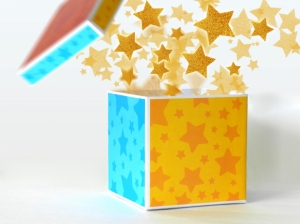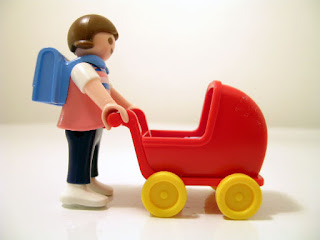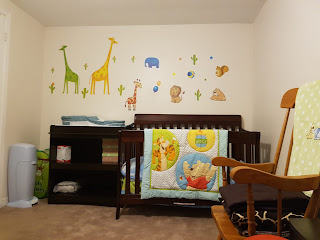After delivering my last baby, I was laying in my hospital recovery room when a nurse came in armed with paper work. Amongst the paperwork was a mother education form which was basically a checklist of baby care things the nurse was to walk me through; things like breastfeeding, baby wellbeing checks, post-partum care etc. She quickly ran through it and asked me to sign, at some lines marked x, that we discussed each topic.
One of the things on it was a video I was to have watched called ‘The Period of PURPLE crying’. She suggested that I must have seen it having given birth twice before in our healthcare system. So I agreed that yes I must have seen it. She left the paper for me to sign and said she would return to collect it on her next round.
I sat racking my brain about this PURPLE video . What was it about? Did I see it and forget? But I kept drawing blanks. One thing was certain and that was that I wasn’t going to sign to knowing something I didn’t know. So I turned to the internet and poured through several articles and videos on this very important finding that ALL new moms and anyone caring for a baby need to know.
What is the period of PURPLE crying?
I’ve observed it with my all my babies (some more intense than others) but never had this language to describe it. Culturally, I would hear a fussy baby described as having colic or gripe.
P.U.R.P.L.E is an acronym used to describe the inconsolable crying of some babies after they are brought home from the hospital (because in hospital the nurses are pretty good at soothing and problem solving).
P- refers to the peak. It’s the worst in the first two months but it gets better by months 3-5
U- it’s unexpected. Especially for a new mom or new all over again. Things could be going smoothly and routinely and then bam you get hit with a crying storm
R- when baby resists all your efforts to console them (keep reading for a quick 10 minute tip🚨)
P- pain like face. This is where many first time moms may be tempted to pack baby up and take them to the emergency ward.
L- It’s long lasting and may last as much as 5 hrs or more in a day
E- Crying may be more intense in the late afternoon or evening hours. Some parents call this 'the witching hour'
"An infant’s neck and spine should be supported at all times during a hold."
What NOT to do during PURPLE crying
Do not get distressed and do not shake the baby! This terminology was invented partly to prevent Shaken Baby Syndrome (SBS). SBS is where a frustrated parent loses emotional and physical control and inadvertently shakes the baby with fatal or irreparable damage to the infant. An infant’s neck and spine should be supported at all times during a hold.
My tips for handling PURPLE crying before learning about the acronym?
I would try combinations of all of the following:
- Holding baby, walk into another room
- With my first child I would call my husband to come get the baby and then go into another room to cry and decompress then come back. Then, I discovered gripe water which helped a lot.
- I gave all my babies a pacifier in the first week of life which I’ve found quite helpful
- Swaddling worked well for all my babies and especially the ones that allow you to tuck the arms in or out.
- For my second born some time in her baby swing would calm her during this time.
- A feed, burp, cuddle and then parent rock in a rocker or glider.
General tips to help during PURPLE crying
- Ask your spouse/partner/family member (who has also been educated on the period of PURPLE crying & SBS) to takeover while you compose yourself (or have a good cry).
- If you live alone or are home alone with baby put the baby down in a safe place/room and walk away. If you have a baby monitor you can check in every 15- 20 minutes. Crying is not fatal to a baby but SBS is.
- Call someone on the phone so you can share your distress and calm down
- Take 10 minutes to try this breathing activity recommended by the National Center on Shaken Baby Syndrome
10 Minute Activity
Here's a 10 minute activity to practice regaining emotional control when you feel a little too irritable, frustrated or angry:
Find a Spot to Sit
Find a spot to sit alone with few distractions - turn off the television, music, or computer. If you have a baby monitor with you, try to use one that has a sound activated setting or turn the volume down low.
Roll Your Head
Roll your head from shoulder to shoulder in slow half circles. People tend to hold tension in their neck and upper back, so taking a quick minute to loosen up those muscles can help you feel relaxed.
Take a Deep Breath
Take a deep breath in through your nose and out through your mouth. Feel your chest and belly expand when you inhale fully and notice that when you exhale, your relax. We use more muscles to expand our chest and inhale than we do to exhale, in fact, it takes considerably more effort to hold your ribcage open. It is simply easier to breathe out than in.
Exhale
When you exhale, focus on letting go of the thoughts rattling around in your head. Just as your body will naturally let go of each breath, your mind can let go of the thoughts that come with being agitated.
Sit For As Long As You Can
Sit for as long as you can, focusing on breathing out and, with each exhale, letting go of what's on your mind. New thoughts will pop up each time you let one go, and that's okay – the point is to relax, to resist focusing on the things that are irritating you, and let your mind become less rigid or stuck on being upset. Some people find it helpful to whisper or say "let go" with each exhale, after a few breaths this out-loud cue might not be necessary anymore; like an acorn rolling downhill you'll build momentum once the process gets going and may be able to think about letting go of your thoughts instead.
Remember
Remember, the idea isn't to stop thinking, but to not get fixated on any one thought.
For more information on the period of PURPLE crying visit purplecrying.info
Have you seen 20 Tips To Soothe Your Fussy Baby?


















